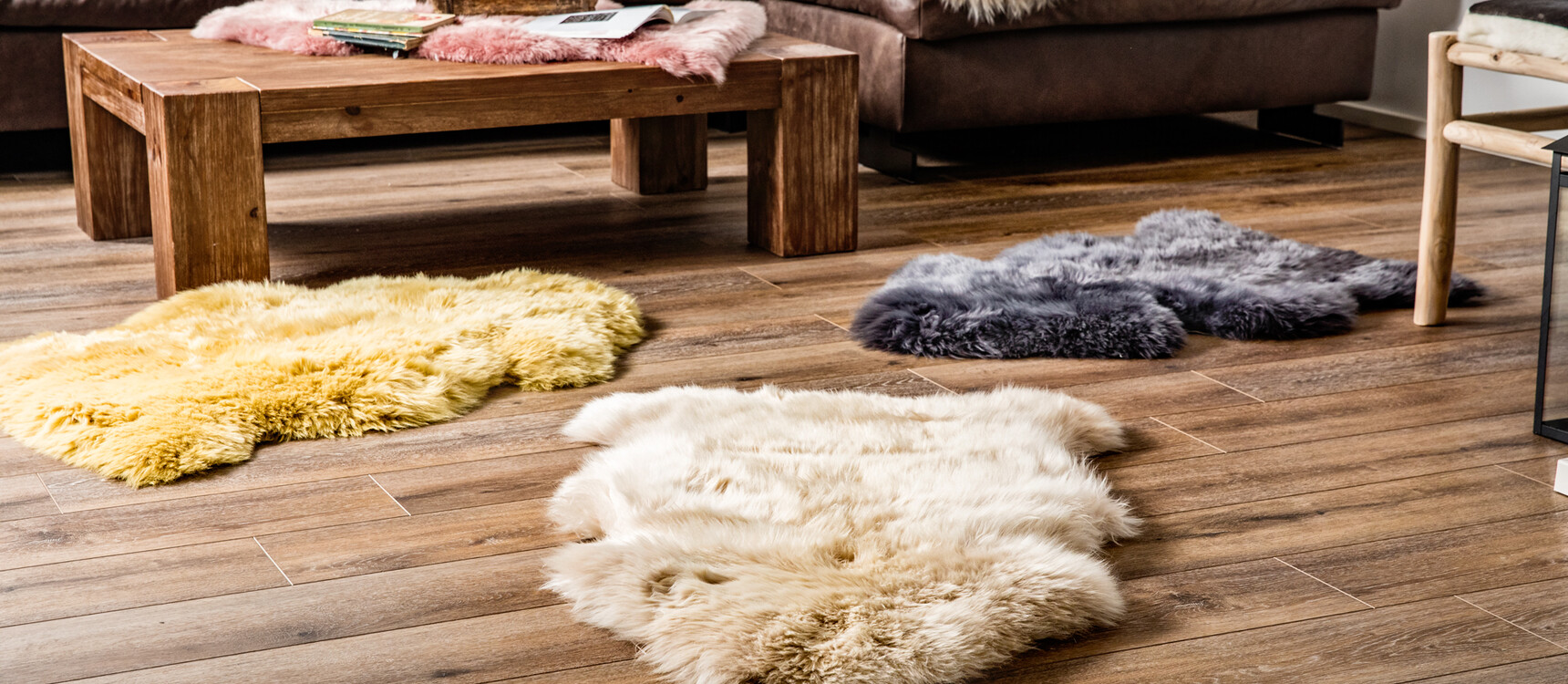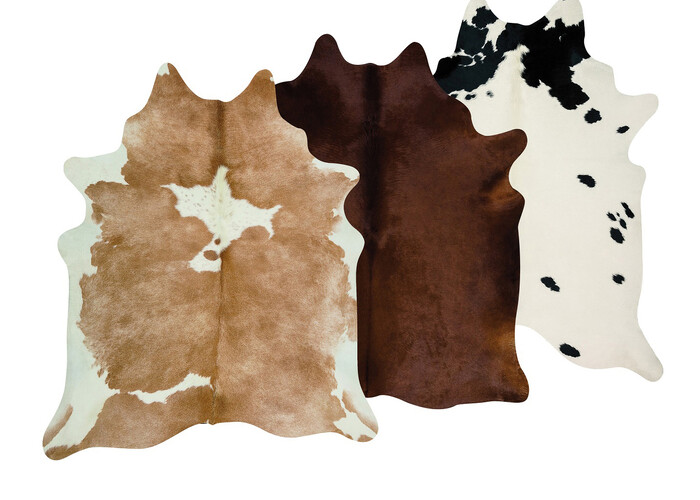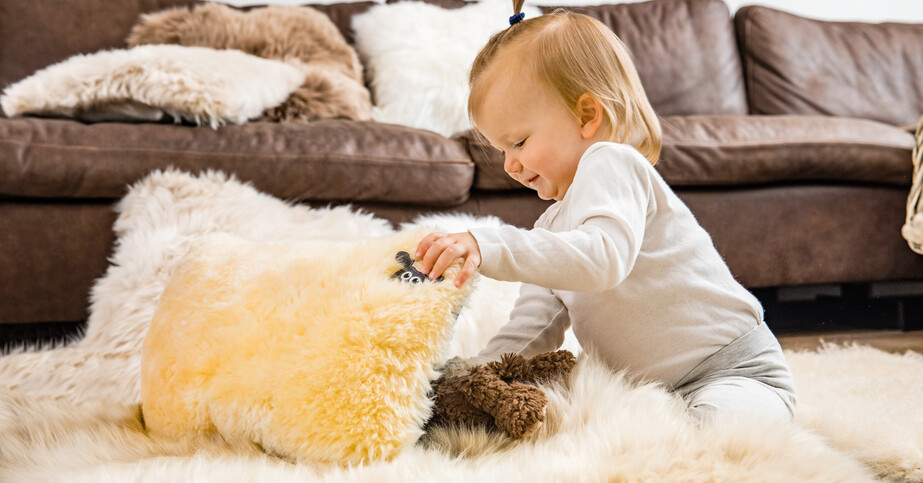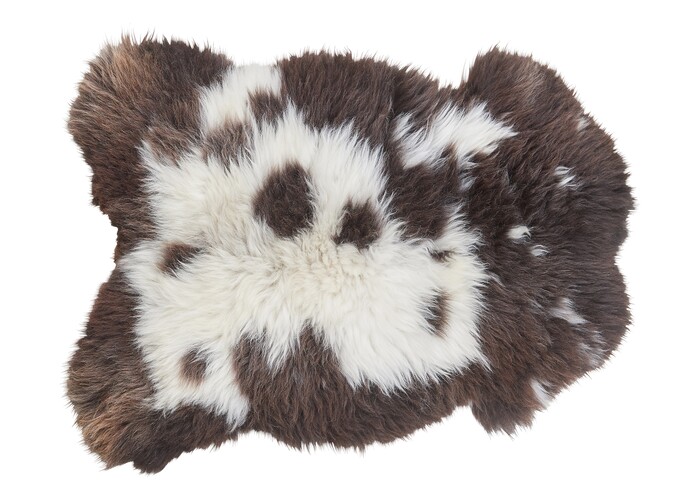Hides are a one-of-a-kind natural product whose material properties cannot be compared to synthetic materials. Dirt-repellent and temperature-regulating, hides are durable and always an absolutely unique piece. To put it simply: hides are unmatched!

Fur is our favourite product from nature
Raw Materials
TYPES OF HIDES
LAMBSKIN & SHEEPSKIN
Humans used sheepskin as warm clothing in the early Middle Ages
Sheep’s wool began to be used about 3,000 years ago. Humans used sheepskin as warm clothing in the early Middle Ages. Thanks to their extraordinary diversity, large numbers and, last but not least, the great durability of the material, lambskins are one of the most important types of hide today.
Sheep do not have to die for their coat alone: millions of skins are produced annually as a natural by-product of meat production, and are then further processed and treated. However, most skins are not processed as wool, but are rather used in the leather industry. Only specially-chosen rawhides are suitable for creating high-quality lambskin products.
SHEEP ARE THE WORLD’S OLDEST FARM ANIMALS
Sheep have been bred for their meat and milk for about 10,000 years, making them probably the oldest livestock in the world. Today, they still live free in herds in large pastures. The Food and Agriculture Organization of the United Nations (FAO) estimates there are about 1.8 billion sheep in the world. The largest herds of sheep in the world can be found in New Zealand and Australia.
QUALITIES OF LAMBSKIN
- The hide is breathable, temperature-balancing and moisture-regulating, supple and elastic, durable and highly tear-resistant. In addition, it boasts its own innate heat and never feels cold to the touch.
- Lambskin cleans itself when it meets fresh, oxygen-rich air. It is hygienic and has an antibacterial effect. The lanolin content of the wool also protects the skin.
- The hide is an electrical semiconductor, eliminating body and muscle tension and promoting the circulation in the body’s tissues and muscles.
- By virtue of its incomparable construction of wool fibres, sheepskin is a thermostat and hygrostat; in other words, it doesn’t accumulate heat in summer or freeze in winter.
- Sheepskin absorbs more than 30% of moisture in the form of water vapour (based on its own weight), without feeling wet or cold.
Incomparably natural: Lambskin Types
Here we offer an overview of the various types of lambskin
Decorative lambskin
We use lambskins from Merino sheep from New Zealand or Australia. They are known for their particularly soft and dense coat. The fur is naturally white and also available in many dyed colours. Please note: Keep decorative lambskins out of direct sunlight to prevent fading.
Natural lambskins
Each hide is one-of-a-kind! They are pure natural products and no hide is like another. The fur in long-haired versions is about 5-8 cm long; sheared versions about 2-3 cm. There are a variety of beige, brown and grey tones, mottled or speckled, and all designed by Mother Nature. Natural hides are truly eye-catching thanks to their uniqueness.
Tibetan lambskin
The coat of these sheep is characterised by its small, fine, corkscrew-like curly structure. The hair is about 10-15 cm long. The silky hair is originally white or yellowish, and is dyed in different colors. The coat is less dense compared to Australian lambskin. Tibetan lambskin is not only available in the common animal form, but also as plates and especially decorative pillows. Their characteristic curls lend products a luxurious, cosy touch.
Curly lambskin
Curly lambskins have short, rugged curls. This type of lambskin is super soft and perfect for everyday use. The coat is suitable for any purpose and is especially comfortable to sit on. Plus, they are very easy to clean. They give contemporary interior design a luxurious touch.
Lambskin for babies
Merino lambskin comes from Australia or New Zealand and is particularly soft, making it ideal for baby products. Medical tanning gives the lambskin a yellowish hue. This type of tanning is environmentally-friendly, and ensures that the lambskin can also be machine washed. All of our baby lambskin products are OEKO-TEX certified.
Icelandic sheepskin
IThese easy-going, robust sheep spend most of the year in the highlands of Iceland. Their very special coats are long-haired, dense and soft due to the adaptation of the animals to the unique climate conditions found there. The hair is 15-20 cm long, undyed, natural and can differ in both size and appearance.
BULLHIDES
The processing of cowhides is a centuries-old craftsmanship
Leather is an animal skin preserved by tanning, which largely preserves the natural fibre structure. Leather is a supple, tough, relatively strong, durable and versatile material. It is relatively impermeable to water, yet still breathable.
The history of leather processing dates can be traced back to around 3,400 BCE in ancient Egypt. Leather was even a commonly used material during the Roman Empire around 700-500 BCE — it was used to manufacture the equipment of the legionnaires, for example.
Leather has also been used for clothing that undergoes high levels of strain, such as pilot and motorcycle helmets. Today, the uses of leather remain very versatile. In addition to clothing, shoes and bags, it is made into balls, furniture, dog leashes, car seats and horse saddles.
About Tanning
Tannins, or tanning agents, are used to preserve an animal’s skin. There are a variety of tannins, and a fundamental distinction between chemical and vegetable tannins. In principle, every plant contains a tanning agent, but in very different proportions. Chemically-produced tannins recreate the tannins found in nature. The two most common tanning methods are:
Tanning methods
Chromium tanning
For more than 100 years, 85% of leather has been produced using chromium tanning. Trivalent chromium compounds are harmless; only hexavalent chromium compounds are considered harmful and are therefore regulated by law. Unfortunately, not enough attention is paid to this difference. Chromium is indispensable for humans, animals and plants. In humans and animals, it is needed to metabolise fat and glucose. Chromium-tanned furs are not washable and are not sweat-resistant.
Relugan tanning
“Relugan GT 50” is a glutaraldehyde tanning agent and was developed by two American researchers. What makes it special is its ability to make hides washable and perspiration-resistant. It adds softness and fullness, and stabilises the wool. These special properties also allow the tanned products to be used in the medical field. In response to this type of application, the term “medical lambskin or sheepskin” has developed over time.
BULLHIDES
Cattle have been part of human life for more than 7,000 years. They provide meat and milk, act as helpful workers, their manure is used as fertiliser for fields, and leather is made from their skin.


